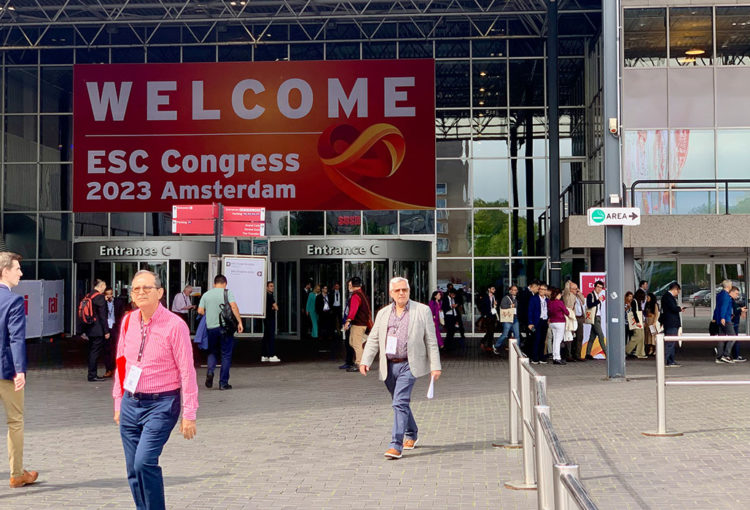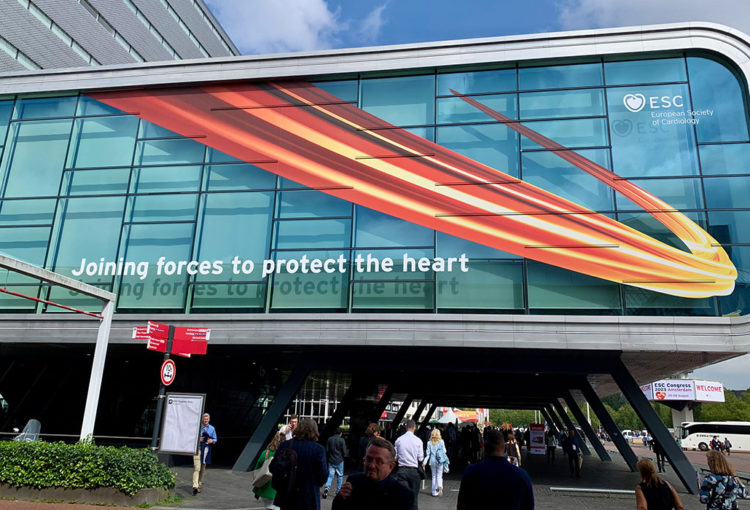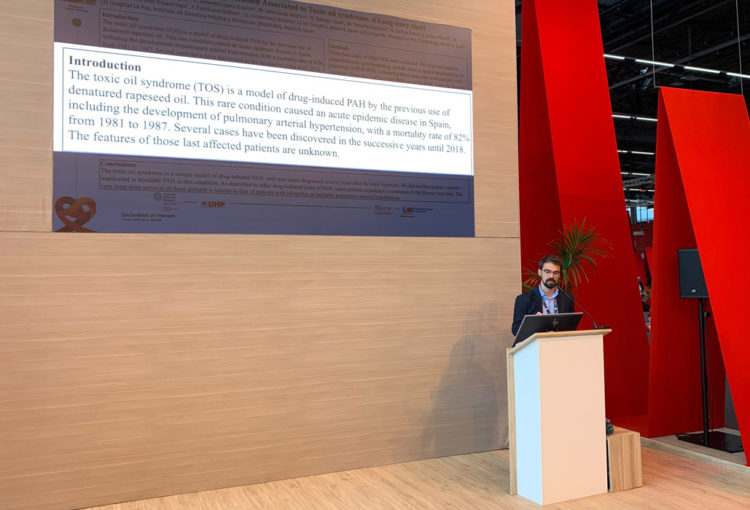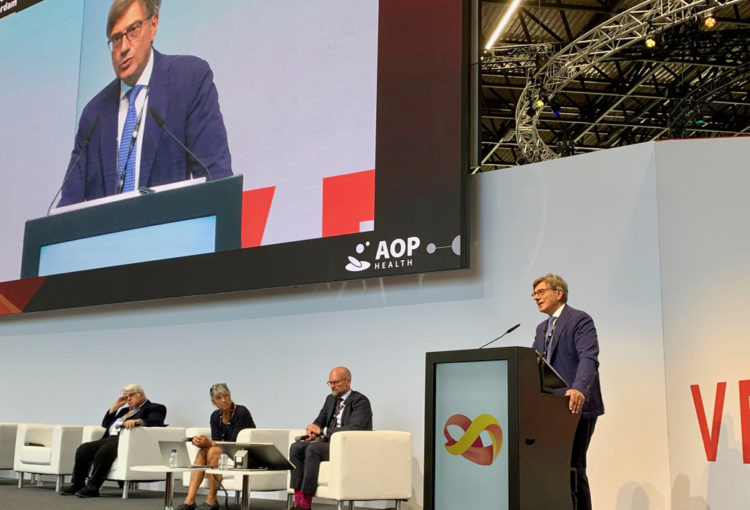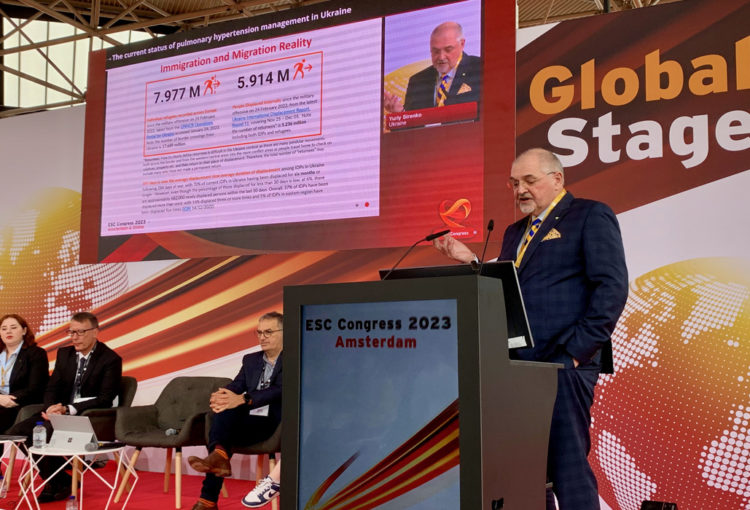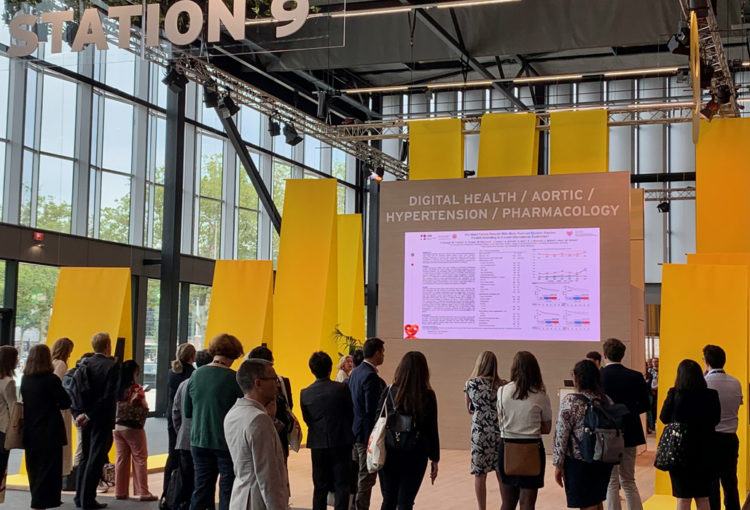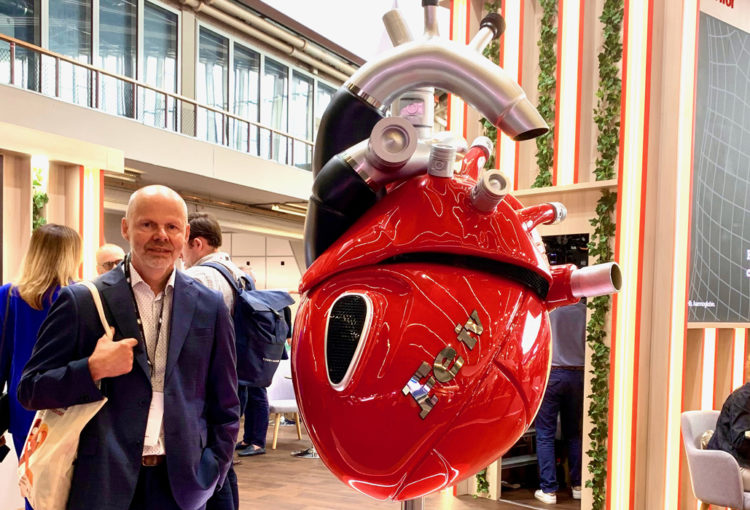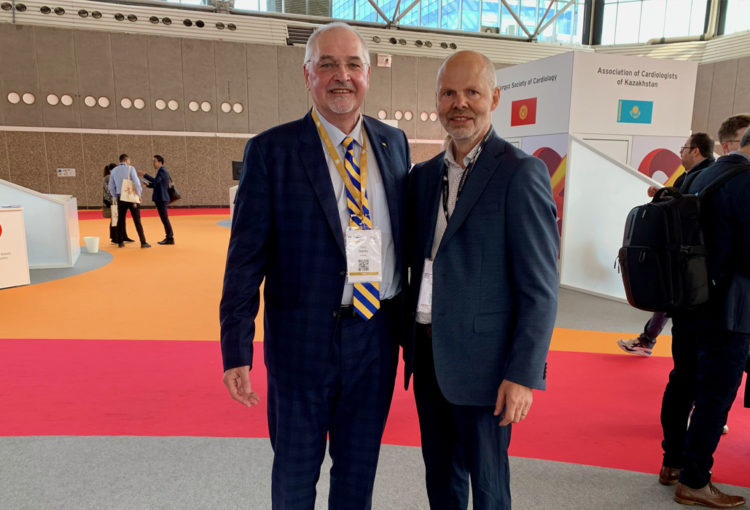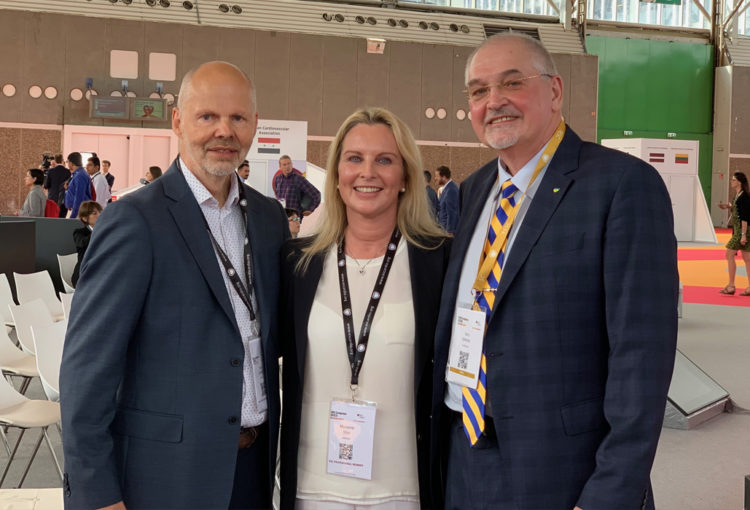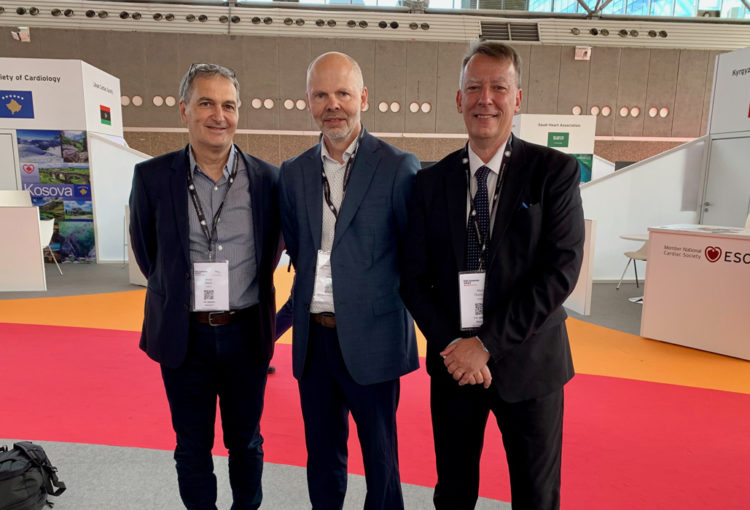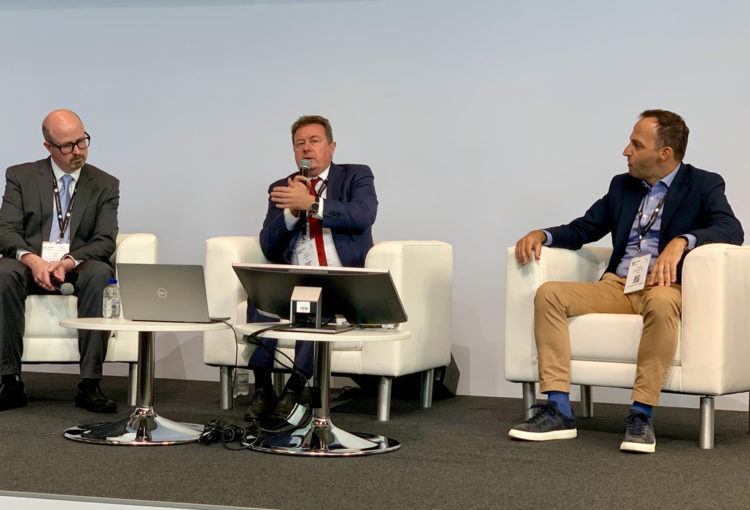Report from the ESC 2023 Congress
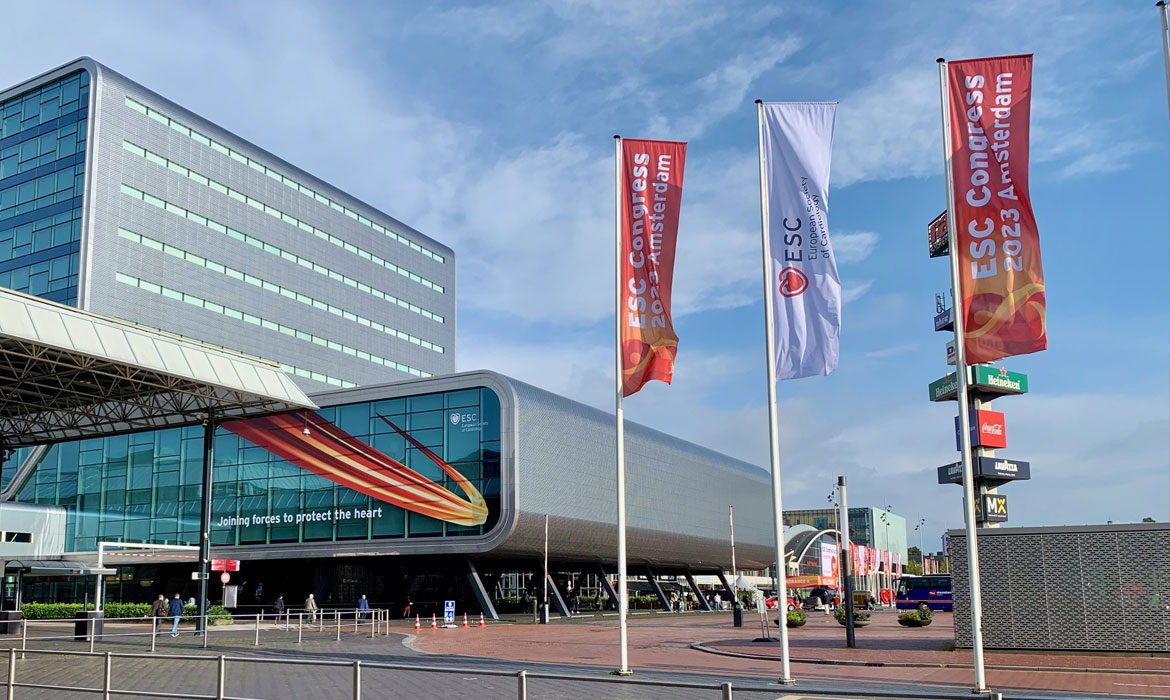
The European Society of Cardiology (ESC) convened its annual congress in Amsterdam from August 25th to 28th. A staggering 30,000 global participants, bolstered by 4,500 faculty members and presenters, attended this monumental event themed “Joining Forces to Protect the Heart”.
ESC stands for the European Society of Cardiology. It maintains close ties with another significant medical society, ERS (European Respiratory Society). As Pulmonary Hypertension (PH) is both a lung and heart disease, both these medical societies are vital to PHA Europe.
The ESC Congress serves as an excellent platform to delve deeper into PH research and treatment via its medical sessions. Additionally, it’s a stellar networking hub, providing opportunities to engage with medical personnel and industry representatives.
Before the congress, I scoured the program using the handy ESC Congress app on my mobile phone, selecting which sessions to attend. These sessions took place in large auditoriums and on smaller stages, with audiences arranged in a semi-circle facing the screen and presenter.
One of the initial presentations I attended was at such a stage. This 45-minute session was split into seven shorter segments, during which researchers showcased their papers. Many of these researchers seemed young, and many innovative papers were shared. Notably, two papers originated from China, indicating the republic’s active involvement in cutting-edge PH research. The paper I found most riveting earned an award from the organizers. It proposed a theory that urine could pinpoint biomarkers for right ventricle failure, i.e. pulmonary hypertension. Moreover, the study found that certain urine protein biomarkers increased as the disease advanced. This suggests that analyzing urine might detect PH or even determine its severity, revolutionizing the diagnosis process with a non-invasive method. Post-presentation, I approached the young researcher about presenting her findings to PHA Europe. After consulting her supervisor, she felt it was premature to share her results, as they were unpublished and required further validation. Nonetheless, China’s involvement in potential groundbreaking PH research was heartening, and we await more developments in this intriguing domain.
Another gripping paper addressed the tragic toxic oil scandal in Spain from 1981 to 1987. People developed PH after ingesting poisoned rapeseed oil, with a staggering mortality rate of 87%. The study concluded that the scandal’s repercussions lingered well beyond the 80s, with deaths reported as recently as 2018! This event holds particular significance for PHA Europe: our World PH Day on May 5th commemorates the first reported death of a child due to this calamity. Post-session, I inquired the researcher if the cause of PH from the toxic oil had been identified, but it remains a mystery, similar to diet products that induced PH. Unraveling these causes could provide more profound insights into PH.
Another session focused on risk assessment at the same stage the following day. Dr. Lina Gumbiene from Lithuania, familiar to me from Baltic conferences, moderated the session. The ESC/ERS guidelines detail these risk assessment strategies for diagnosing and treating PH patients. They are paramount for gauging patients at the diagnosis stage and during follow-ups. The updated 2022 guidelines now categorize patients into four risk groups, reflecting a more nuanced classification than the previous three-group system. This stratification plays a crucial role in determining treatments. Detailed illustrations of these strategies were further presented during a symposium session, later in the evening, at a primary stage, chaired by the renowned Professor Rosenkranz.
Another key event for me spotlighted the treatment perspectives of PH patients in France and Ukraine, directed by esteemed French PH experts Professor Marc Humbert and Professor Olivier Sitbon. Doctors from both nations presented patient cases, underlining how the guidelines expertly guide treatment decisions. The French academicians lauded their Ukrainian counterparts for their adept treatment of a Ukrainian patient, despite limited medical options. Professor Yuriy Sirenko, heading the PH department at the Kiev hospital, illuminated the difficulties faced in Ukraine due to the ongoing conflict. Naturally, daily missile alerts are far from conducive for patients and healthcare providers. The mass migration within and outside Ukraine complicates monitoring and ensuring continual care for these patients. In a post-talk discussion with me, Professor Sirenko highlighted challenges faced by returning patients treated with medications unavailable in Ukraine. He sought PHA Europe’s aid, leading me to arrange a meeting with Janssen, one of the exhibitors at the congress. Professor Marc Humbert wrapped up by emphasizing Western support and voicing hopes for peace. He graciously proposed integrating the PH department of Strazhensku Cardiology Institute, where Professor Sirenko serves, into the ERN Lung. This integration would bolster ties between Ukrainian and European PH communities, immensely benefitting the Ukrainian PH healthcare framework and its patients.
Without question, PHA Europe’s presence at the ESC Congress was pivotal. In the coming week, a larger PHA Europe delegation will grace the ERS Congress. Our presence at these seminal events aims to broaden our connections, amplify awareness about our initiatives, and augment our expertise, ultimately uplifting the European PH community and patients.
More photos



